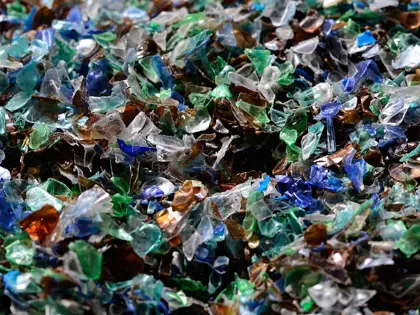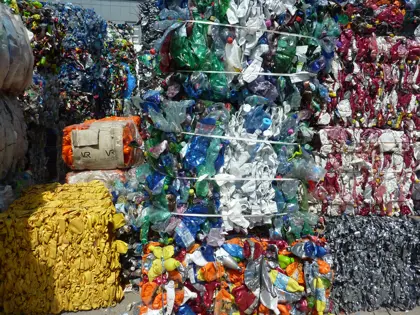Why do we need waste treatment, and what does it involve? Learn how modern waste treatment methods – from waste splitting to energy recovery – protect human health, reduce environmental impact, and transform waste into valuable resources.
Why Do We Need Waste Treatment?
Waste is an unavoidable by-product of human activities. Without proper treatment, waste poses various environmental risks:
- Human toxicity (health hazards)
- Eco-toxicity (harm to ecosystems)
- Global warming (landfill methane emissions)
- Resource depletion (loss of recoverable materials)
Legal Context
The EU Waste Framework Directive (2008/98/EC) defines waste management as the collection, transport, recovery, and disposal of waste, including supervision and after-care. Its hierarchy prioritises prevention, reuse, recycling, recovery, and disposal – in that order – to protect the environment and human health.
What Is Waste Treatment?
Waste treatment includes all processes that modify the physical, chemical, or biological characteristics of waste to reduce its volume and hazards, enable resource recovery, and prepare it for safe disposal.
🔗 Discover how FCC Environment CEE transforms waste into resources through innovative treatment technologies.
Key Waste Treatment Methods
1. Selective Collection
Separating waste at source is the first step towards effective treatment. There are 2 main categories of waste:
- Biodegradables: Sent for composting or anaerobic digestion to produce compost or biogas.
- Secondary Raw Materials (SRM): Paper, cardboard, plastics, textiles, glass, and metals are sorted and prepared for recycling, saving landfill space and primary resources.
2. Mechanical Treatment (Waste Splitting)
Mechanical treatment, or waste splitting, processes mixed waste streams (municipal solid waste, waste from commercial and industrial subjects) to:
- Remove contaminants (e.g. stones, metals)
- Extract recyclables (plastics, metals, glass, paper)
- Separate high-calorific fractions for RDF (Refuse Derived Fuel) production
Methods used include:
- Shredding
- Screening
- Air separation
- Magnetic and eddy current separation
Example: At FCC Environment CEE´s RDF plant in Zabrze, Poland, ~55,000 tonnes/year of RDF with 10-15 MJ/kg calorific value are produced from ~65-70,000 tonnes of input waste, providing alternative fuel for cement kilns and reducing fossil fuel use.
3. Biological Treatment
Biological treatment uses natural processes to decompose organic waste, reducing its volume and generating valuable by-products. Key methods include:
a. Composting (Aerobic Treatment)
Organic waste, such as green waste, food waste, and biodegradable fractions, is broken down by microorganisms in the presence of oxygen to produce compost, which can be used as a soil improver in agriculture and landscaping.
b. Anaerobic Digestion (AD)
In anaerobic conditions (absence of oxygen), organic waste is decomposed to produce biogas (a renewable energy source) and digestate (used as fertiliser). Biogas can be upgraded to biomethane and injected into the grid or used for electricity and heat production.
At FCC Environment CEE´s treatment facilities, biological waste undergoes:
- Intensive composting phase (2 weeks)
- Maturation phase (2 weeks)
- Resulting in high-quality compost for soil enrichment.
These biological treatment methods contribute significantly to climate protection by avoiding methane emissions from landfilling and replacing chemical fertilisers.
🔗 Explore our mechanical-biological treatment plants for sustainable waste processing.
4. Thermal Treatment (Waste-to-Energy)
When recovery or recycling is not feasible, thermal treatment is applied:
- Incineration with energy recovery reduces waste volume and produces electricity and heat.
- Modern Waste-to-Energy (WtE) plants, like FCC’s facility in Zistersdorf, Austria, generate 100,000 MWh annually, equivalent to the consumption of 30,000 households.
Residuals such as ash or slag are safely disposed of in controlled landfills.
Waste to Resource: Driving the Circular Economy
Effective waste treatment converts waste into resources, supporting:
- Resource efficiency: By recovering materials and energy.
- Carbon reduction: Through alternative fuels and renewable energy generation.
- EU circular economy goals: Keeping materials in use and reducing environmental footprint.
For example, our mechanical-biological treatment plants recover recyclables and produce RDF, directly replacing virgin resources in the cement and energy industries.
Waste Treatment in Europe: Key Statistics
According to Eurostat, over 2.2 billion tonnes of waste were generated in the EU in 2020, with approximately 38% sent for recovery other than energy, 39% landfilled, and 4% incinerated with energy recovery. Increasing treatment capacity and resource recovery is crucial to meet sustainability targets.
Towards a Circular Economy
Waste treatment methods that prioritise recycling, material recovery, and waste-to-resource technologies are essential for a circular economy. They keep valuable materials in the production cycle and minimise environmental impact.
At FCC Environment CEE Group, our commitment is clear: turning waste into resources to build a more sustainable future.
🔗 Learn more about FCC Environment CEE’s role in the circular economy.











